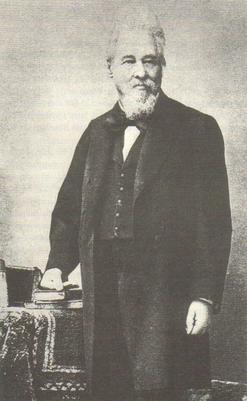Norbert Rillieux
| Norbert Rillieux | |
|---|---|

undated photograph
|
|
| Born |
March 17, 1806 New Orleans, Louisiana |
| Died | October 8, 1894 (aged 88) Paris, France |
| Nationality | American |
| Alma mater | École Centrale Paris |
| Occupation | Engineer |
Norbert Rillieux (March 17, 1806 – October 8, 1894) is a Louisiana-born, French-speaking Creole inventor who is widely considered as one of the earliest chemical engineers and noted for his pioneering invention of the multiple-effect evaporator. This invention was an important development in the growth of the sugar industry, as it allowed an energy-efficient means of evaporation at lower temperatures. Rillieux was a cousin of the painter Edgar Degas.
Norbert Rillieux (1806-1894), widely considered to be one of the earliest chemical engineers, revolutionized sugar processing with the invention of the multiple effect evaporator under vacuum. Rillieux’s great scientific achievement was his recognition that at reduced pressure the repeated use of latent heat would result in the production of better quality sugar at lower cost. One of the great early innovations in chemical engineering, Rillieux’s invention is widely recognized as the best method for lowering the temperature of all industrial evaporation and for saving large quantities of fuel.
Norbert Rillieux was born into a prominent Creole family in New Orleans, Louisiana. He was the son of Vincent Rillieux, a white plantation owner, and his placée, Constance Vivant, a free person of color. Norbert was the eldest of seven children. His siblings were: Barthelemy, Edmond, Marie Eugenie, Louis, Marie Eloise, and Cecile Virginie. Norbert's aunt on his father's side, Marie Celeste Rillieux, was the grandmother of painter Edgar Degas. His aunt on his mother's side, Eulalie Vivant, was the mother of Bernard Soulie, one of the wealthiest gens de couleur libre in Louisiana.
As a Creole of color, Norbert Rillieux had access to education and privileges not available to lower-status free blacks or slaves. Baptized Roman Catholic, Rillieux received his early education at private Catholic schools in Louisiana before traveling to Paris in the early 1820s to study at École Centrale Paris, one of the top engineering schools in France. While at École Centrale, Norbert studied physics, mechanics, and engineering. He became an expert in steam engines and published several papers about the use of steam to work devices. These early explorations became the foundation of the technology he would later implement in his evaporator. At 24 (1830), Rillieux became the youngest teacher at École Centrale, instructing in applied mechanics. He was also a competent blacksmith, an expert machinist, and fluent in French.
...
Wikipedia
